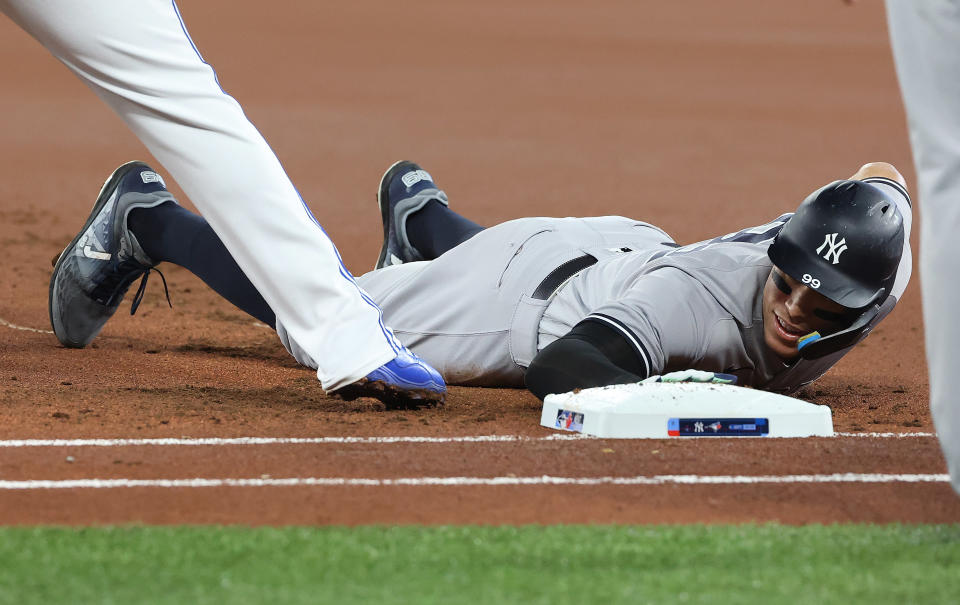After three years managing the Triple-A Durham Bulls — to a cumulative .589 record and consecutive Triple-A national championships in 2021 and ‘22 — Brady Williams is getting the call to the bigs this season. He’ll serve as the third-base coach for the famously savvy Tampa Bay Rays, with whom his knowledge of the organization’s up-and-coming players will serve him in deciding whether to send a guy.
He also brings valuable experience with some of the rule changes poised to go into effect at the major-league level this season. Williams has seen the bigger bases, nervously sweated through the pressure-packed pitch timer and even reckoned with robo-umps (which are at least a year away from infiltrating the majors). The intent of all this — along with limits on defensive positioning that were tested at lower levels — is to create a livelier game that packs more action into less time.
Williams has his own opinions about how effective the rules will be in actualizing that vision — he emailed the league to explain that umpires calling balls or strikes for clock infractions were bad for pace of play and to suggest a different penalty system — but understands that the game now is about adjusting to this new reality. And for that, he has some advice as teams prepare for a spring training that’ll be spent getting up to speed.
“For any coach, you have to coach better, honestly,” he told Yahoo Sports. “You gotta teach your players and hopefully get them more fundamentally sound with some things because the catcher and the pitcher can’t rely on the coach to call a pick-over.”
He was referring to a subsection of the pitch timer that could have even more strategic implications than the clock itself. When the timer was introduced on an experimental basis in the minor leagues, it became apparent that if pitchers could restart the clock by stepping off the rubber — to throw to first base, for instance — they would render the whole enterprise moot by doing so with abandon.
And so, along with governing the amount of time pitchers are allotted — in the majors this year, it will be 15 seconds between pitches with the bases empty and 20 seconds with runner(s) on — the rules also limit the number of times a pitcher can step off the rubber. Two “disengagements,” i.e. pick-off attempts, will be permitted per at-bat. If a third pick-off attempt is unsuccessful, the runner will be awarded second base.

